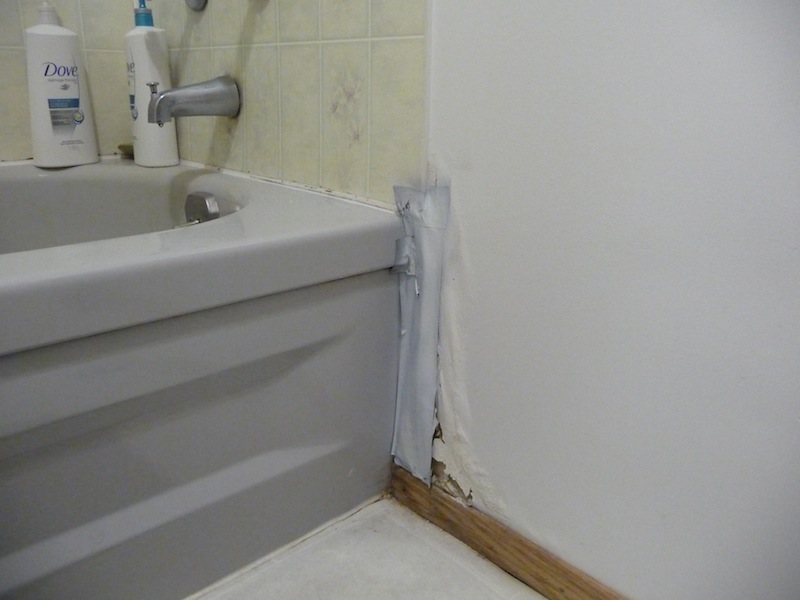Exactly how to avoid a Water Damaged Bathroom
Exactly how to avoid a Water Damaged Bathroom
Blog Article
How do you really feel in relation to Preventing Water Damage in the Bathroom?

The bathroom is extremely susceptible for damp buildup and also possible water damage due to the frequent use of water in it. This short article uses straightforward examination techniques to aid detecting water damage risks.
The regular use of water in the restroom makes it incredibly prone for damp build-up as well as potential water damage. By inspecting it regularly, you can reduce water relevant problems.
The adhering to collection of assessments is very easy to do and ought to be done once in every three months in order to keep your bathroom in good shape and also to stop prospective water problems brought on by the bathtub, the shower, pipeline joints as well as plumbing, sinks, cupboards, and the toilet
Do not forget doing these evaluations and be thorough while executing them. Remember that these basic evaluations can save you a great deal of cash by supplying early signs for water damages
Tub as well as Shower
The shower and bath tub call for special attention and upkeep. Inspect the ceramic tiles and change if broken. Make sure that there is no missing out on grout between the floor tiles. Check and change split caulking at joints where the wall surfaces meet the flooring or the tub. Clogged drains pipes as well as pipes troubles will prevent the bath tub from drying out and might indicate severe problems underneath the bathtub. Talk to a specialist right away to prevent architectural damages. Focus on discolorations or soft areas around the bath tub wall surfaces as they may suggest an internal leak.
Plumbing
Signs for water damages are difficult to identify since many pipelines are mounted inside the walls.
Pay unique attention to flooring as well as wall surfaces moisture as well as discolorations as they may suggest an unseen plumbing problem. Inspect dampness levels in adjoining spaces too.
Sinks as well as Cabinets
Sinks and also cabinets are subjected to dampness and also humidity day-to-day and are commonly overlooked. Examine on a regular basis under the sink and also on the kitchen counter above it. Repair any type of drip in the catch as it might recommend drain issues. Browse the sink, sluggish draining pipelines may indicate a blocked drain. Replace sink seals if they are split or loosened.
The Toilet
The toilet is a prone water joint. Examine the water lines and search for leaks around the toilet seat, in the hose pipe, as well as under the water storage tank. If you identify any signs of moisture on the floor around the bathroom, check for leaks in the toilet rim as well as storage tank seals.
Know that hanging commode dish antiperspirants raises the chances for clogs.
How to Prevent Water Damage in Your Bathroom?
Water damage repair is an expensive, meticulous, and lengthy process. Unfortunately, bathrooms are the most susceptible rooms to water damage due to toilets, showers, and sinks. Pipes and fixtures wear out over time and are not immune to damage. But all is not lost, as there are ways to prevent water damage from occurring in your bathroom.
Check Your Plumbing
Nothing lasts forever, especially pipes, which can rust and begin leaking over time. You should periodically conduct pipe inspections and pay attention for any musty smells or water stains that may indicate you need water damage repair. Here are some things to check:
Frequently test valves for your toilet, shower, and sink to ensure they are properly working. Check faucet supply lines hidden under vanities and replace when needed. Replace cracked or deteriorating caulking along sinks, tubs, and showers. If you notice a clog in your sink, call in a professional. Since you can’t check the pipes in the wall, keep an eye out for stains, drywall bubbling, musty smells, and excess moisture; if the bathroom is on a second level, check the ceiling of the room directly below for these signs. Don’t Overwork Your Toilet
One of the most common reasons bathrooms need water damage repair is due to overflowing toilets. Save yourself the hassle of cleanup by being mindful and not pushing your toilet to extreme limits. If you have young children, it is especially important to keep an eye on them when they are in the bathroom and to teach them how to avoid clogging the toilet. Here are some more tips to help prevent your toilet from overflowing:
If you have a septic tank, only use septic-safe toilet paper Do not flush anything down the toilet besides toilet paper; items like diapers and sanitary napkins will clog the piping Pay attention to your toilet’s water level: If it’s low, it could mean it is partially clogged or that there is a crack in the toilet bowl Maintain Your Shower/Tub
Replace showers or tubs with cracks or other damage; even hairline cracks can allow water to seep in and cause damage. Grout and caulk help prevent water from seeping into walls and floors, so repair them if they are chipped, cracked, or deteriorating. Replace torn shower curtains or shower doors with seals that no longer work. Dry the floor and drain water from the tub immediately after use to prevent damage from sitting water. https://www.alure.com/home-improvements-blog/resources/how-to-prevent-water-damage-in-your-bathroom

As a keen reader on How to Repair and Prevent Bathroom Water Damage, I was thinking sharing that excerpt was essential. Sharing is caring. Helping people is fun. Thank you for your time. Kindly check our site back soon.
This Post Report this page